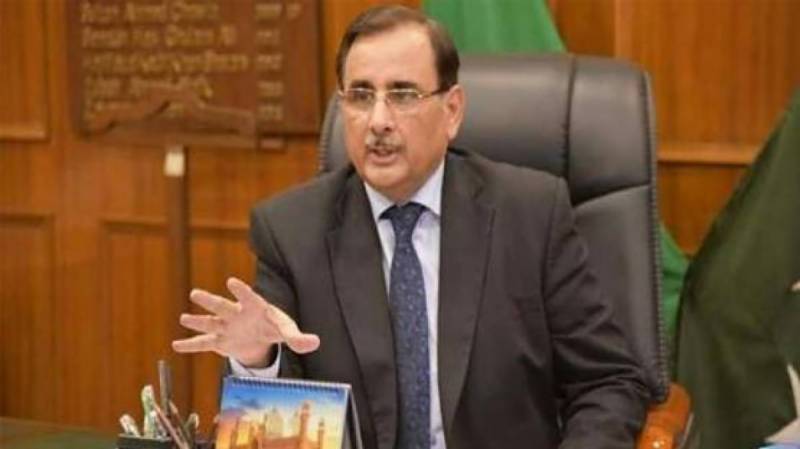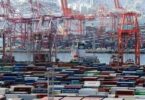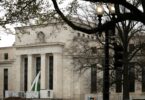F.P. Report
ISLAMABAD: The Federation of Pakistan Chambers of Commerce and Industry’ Businessmen Panel (BMP), while calling for tightening the noose of law through constant crackdowns on smuggling and hoarding of dollars to maintain stability of rupee, has said that the local currency has once again started declining mode after emerging among the world’s top-performing currencies in the past two months.
FPCCI former president and BMP Chairman Mian Anjum Nisar said the rupee appreciation run is to be attributed to government’s administrative measures against dollar smuggling and hoarding. The appreciation comes amid a crackdown against informal channels that are used to smuggle currencies into neighboring countries. These administrative measures have clamped down speculative and hoarding practices of informal markets.
FPCCI former president and BMP Chairman Mian Anjum Nisar said that in the past few sessions the rupee has lost around 1% and this development came after the interim government cracked down on smuggling and hoarding of foreign currency, while the central bank suspended the authorization of nine exchange companies for noncompliance of rules and regulations and serious violations, which need to continue to stable the rupee.
He said that the rupee recently saw one of the longest appreciation runs against the US dollar, surging around 10% since the start of September, making it the best-performing currency globally after Afghanistan’s afghani. The improvement came after the State Bank of Pakistan (SBP) announced a list of structural reforms last month, targeting the Exchange Companies (ECs).
The recent appreciation of the Pakistani rupee will likely be short-lived, given soaring interest costs and only short-term arrangements with the International Monetary Fund (IMF) and bilateral financing to support the external balance, he said.
Countrywide raids were also reported with dozens of illegal currency exchanges barred from running operations and foreign currency worth millions confiscated.
However, risk remains as investors brace for possible unrest as the nation prepares to hold national elections in the first few months of next year, he said, adding that the muted growth in country’s export and remittance inflows have made Pakistan more dependent on foreign inflows from friendly countries in the Middle East as well as China.
Pakistan is set to receive the IMF mission, led by Nathan Porter, on November 2 to discuss the first review of the country’s current $3 billion standby arrangement (SBA), which has been seen as providing stability to the economy in distress.
On the back of a crackdown on smuggling and illegal exchanges, the Pakistani rupee emerged as the best-performing currency in the world in September.
The currency appreciated from Rs305.54 against the US dollar on August 31 to Rs287.74 on September 28 against the greenback, an increase of Rs17.8 or 6.2%. The rupee is currently also on a winning run of 17 sessions, in which it has gained nearly 7% after it hit a record low of 307.1 on September 5.
Moreover, during the month, the State Bank of Pakistan (SBP) also announced structural reforms targeting Exchange Companies (ECs) sector.
Among the measures announced is the central bank directive for the commercial banks to establish their own ECs, as wholly-owned subsidiaries. Moreover, the SBP also directed to raise the minimum capital requirement for ECs from Rs200 million to Rs500 million.
The rate between the open- and inter-bank market is narrowing. We could possibly see remittances improve, and reach up to $2.4 billion in coming months, he added.
The materialisation of external flows would further subside pressure on the rupee. He said the improvement comes after the government and regulator started taking steps to control illegal currency trade and smuggling.
The rupee gained 6-9% in the inter-bank market against three major currencies i.e. USD, UK Pound, Euro, in last few weeks, he said.
In the open market, it gained 11-13%, eliminating the premium of open-market rate in spite of the US Dollar index reaching a 10-month high,” he added.
A market-based exchange rate is one of the key conditions agreed upon by the Pakistani authorities as they inked the much-needed $3 billion Stand-By Arrangement (SBA) with the IMF in July to help avert a sovereign default.
Anjum Nisar observed that besides increasing exports and controlling imports the government will have to take administrative measures, as a large demand of cash dollars are seen in the market.
He argued that this devaluation of the currency was dictated by the IMF through prior actions and it has nothing to do with macroeconomic fundamentals. He said that there was a complete breakdown of economic policymaking, as the country’s fiscal policy had become subservient to monetary and exchange rate policies.
He urged the government to control volatility of rupee against the US dollar, as the industrial revival and economic growth is not possible without stability of local currency.
He said that the massive devaluation of currency fuelled inflationary pressures, adding that two major factors contributed to the price hike. First, the prices of food and commodities as well as fuel prices skyrocketed in the international market, and second, the depreciation of the exchange rate by 30 percent also led to higher inflation, he added.







